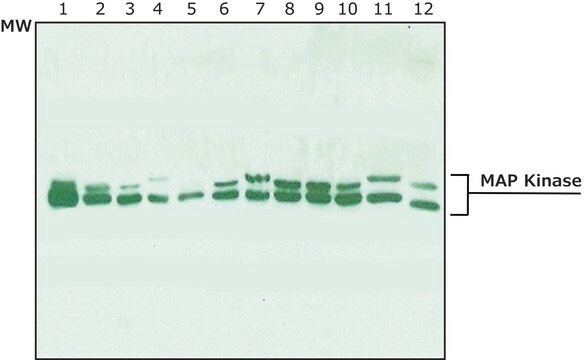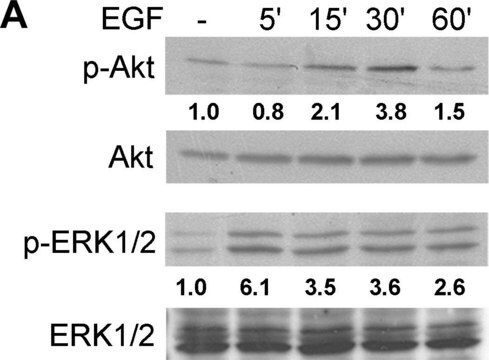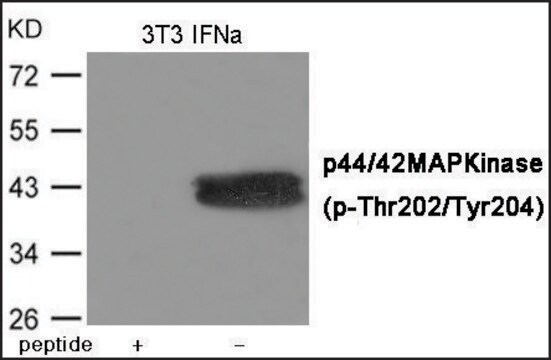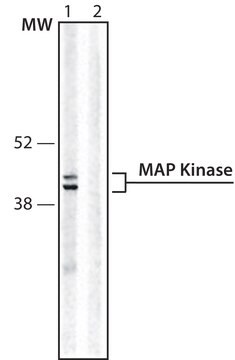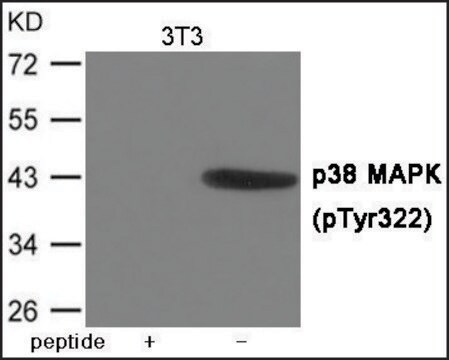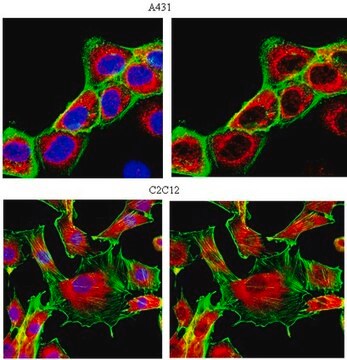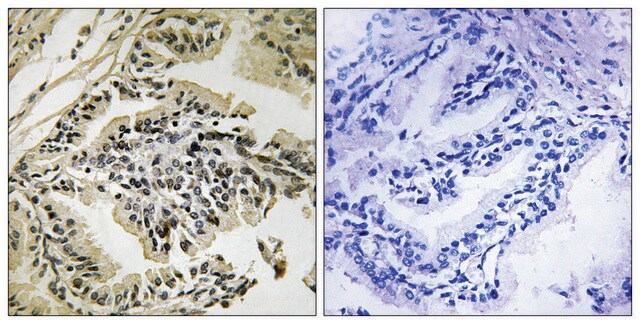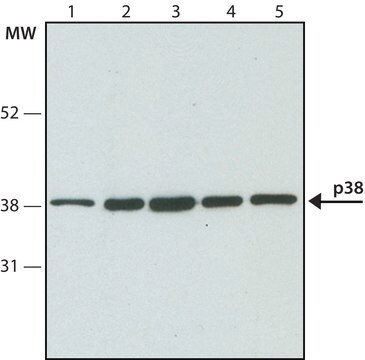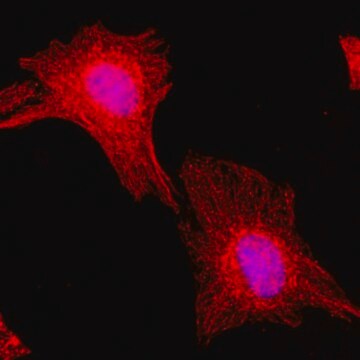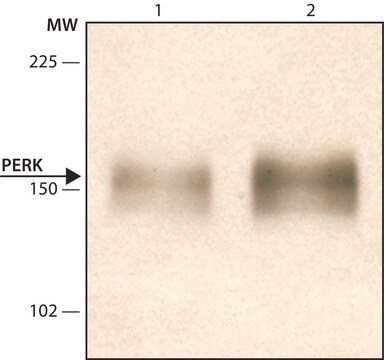M9692
Anti-MAP Kinase, Activated (Diphosphorylated ERK-1&2) antibody, Mouse monoclonal
clone MAPK-YT, purified from hybridoma cell culture
Sinonimo/i:
Monoclonal Anti-MAP Kinase, Activated (Diphosphorylated ERK-1&2)
About This Item
Prodotti consigliati
Origine biologica
mouse
Livello qualitativo
Coniugato
unconjugated
Forma dell’anticorpo
purified immunoglobulin
Tipo di anticorpo
primary antibodies
Clone
MAPK-YT, monoclonal
Stato
buffered aqueous solution
PM
antigen ERK-1 44 kDa
antigen ERK-2 42 kDa
Reattività contro le specie
human, Caenorhabditis elegans, Xenopus, Drosophila, hamster, rat, bovine, mouse, yeast
Confezionamento
antibody small pack of 25 μL
Concentrazione
1.5-2 mg/mL
tecniche
immunocytochemistry: suitable
immunohistochemistry (formalin-fixed, paraffin-embedded sections): suitable
immunoprecipitation (IP): suitable
indirect ELISA: suitable
microarray: suitable
western blot: 0.5-1 μg/mL using a whole cell extract of RAT-1 cells treated with vanadate and H2O2.
Isotipo
IgG1
N° accesso UniProt
Condizioni di spedizione
dry ice
Temperatura di conservazione
−20°C
modifica post-traduzionali bersaglio
unmodified
Informazioni sul gene
human ... MAPK1(5594) , MAPK3(5595)
mouse ... Mapk1(26413) , Mapk3(26417)
rat ... Mapk1(116590) , Mapk3(50689)
Cerchi prodotti simili? Visita Guida al confronto tra prodotti
Descrizione generale
Anti-MAP Kinase, Activated (Diphosphorylated ERK-1&2) antibody, Mouse monoclonal (mouse IgG1 isotype) is derived from the MAPK-YT hybridoma produced by the fusion of mouse myeloma cells (NS1) and splenocytes from BALB/c mice immunized with a synthetic phosphorylated peptide containing amino acids corresponding to the phosphorylated form of ERK-activation loop, conjugated to KLH. The isotype is determined by a double diffusion immunoassay using Mouse Monoclonal Antibody Isotyping Reagents, Product Number ISO2.
Specificità
Immunogeno
Applicazioni
Monoclonal Anti-MAP Kinase, activated (Diphosphorylated ERK-1&2) antibody produced in mouse has been used in detection of
- ERK1/2 in cardiac myocytes using immunofluorescence microscopy
- ERK1/2 in human eosinophils using western blotting
- ERK in human bronchial epithelial cells using protein array
- ERK proteins in human liver cell lines using immunofluorescence assay and western blot analysis
- ERK1/2 in human embryonic kidney cells by immunoprecipitation
Azioni biochim/fisiol
Monoclonal Anti-MAP Kinase, Activated (Diphosphorylated ERK-1 and 2) is specific for the active, dually-phosphorylated form of MAP kinase (ERK-1 and ERK-2, 44 kDa and 42 kDa, respectively). The epitope recognized by the antibody contains the phosphorylated threonine and tyrosine residues within the regulatory site of active MAP kinase (Thr183 and Tyr185 in ERK-2). It does not recognize the non-phosphorylated or the monophosphorylated forms of the MAP kinase molecule or the diphosphorylated form of Jun-kinase (JNK) and p38 MAP kinase.
Signaling pathways mediated by MAPK are associated in the pathogenesis of neurodegenerative disorders and cancer. Deletion in the ERK1 gene locus is associated with DiGeorge syndrome (DGS) and velocardiofacial syndrome (VCFS) and congenital heart defects. Rearrangements in MAPK3 gene locus may contribute in the pathogenesis of autism spectrum disorders and schizophrenia.
Stato fisico
Stoccaggio e stabilità
Esclusione di responsabilità
Non trovi il prodotto giusto?
Prova il nostro Motore di ricerca dei prodotti.
Codice della classe di stoccaggio
12 - Non Combustible Liquids
Classe di pericolosità dell'acqua (WGK)
nwg
Punto d’infiammabilità (°F)
Not applicable
Punto d’infiammabilità (°C)
Not applicable
Dispositivi di protezione individuale
Eyeshields, Gloves, multi-purpose combination respirator cartridge (US)
Scegli una delle versioni più recenti:
Possiedi già questo prodotto?
I documenti relativi ai prodotti acquistati recentemente sono disponibili nell’Archivio dei documenti.
I clienti hanno visto anche
Articoli
Alzheimer's Disease
Il team dei nostri ricercatori vanta grande esperienza in tutte le aree della ricerca quali Life Science, scienza dei materiali, sintesi chimica, cromatografia, discipline analitiche, ecc..
Contatta l'Assistenza Tecnica.